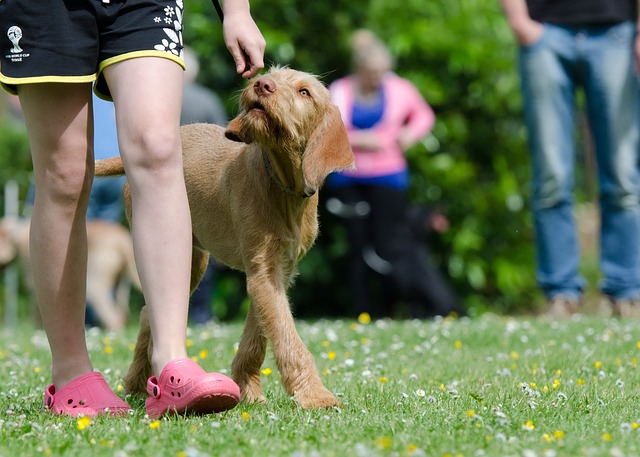How to Train Your Dog for Better Behavior
Training your dog is an essential part of building a strong bond and creating a well-behaved companion. With consistency, patience, and positive reinforcement, you can teach your dog to behave in a way that’s both respectful and enjoyable for everyone involved.
Before we dive into the nitty-gritty of training, it’s essential to understand that every dog is unique, with its own strengths, weaknesses, and learning styles. As such, what works for one dog may not work for another. However, by understanding these fundamental principles and adapting your approach accordingly, you can create a customized training plan that suits your dog’s individual needs.
**Step 1: Establish Clear Communication**
Effective communication is the cornerstone of any successful training program. To begin with, it’s crucial to establish clear boundaries and expectations with your dog. This involves using consistent commands, body language, and tone of voice to convey messages.
Start by teaching your dog basic obedience commands such as “sit,” “stay,” and “come.” Use positive reinforcement techniques like treats, praise, and affection to encourage good behavior. Be patient and consistent in your approach, as this will help your dog develop a strong understanding of what’s expected of them.
**Step 2: Set Boundaries and Rules**
Establishing clear boundaries and rules is vital for creating a well-behaved dog. This involves setting limits on behaviors such as barking, jumping up, and begging, as well as establishing a routine for feeding, exercise, and sleep.
To do this effectively, you need to identify areas where your dog may be misbehaving and address them specifically. For example, if your dog is barking excessively during the evening hours, you can establish a “quiet time” rule by giving them a treat or toy when they remain silent.
**Step 3: Use Positive Reinforcement**
Positive reinforcement is a powerful training tool that encourages desired behaviors while discouraging undesired ones. By associating good behavior with rewards like treats and praise, you can create a positive feedback loop that motivates your dog to repeat the desired actions.
To use positive reinforcement effectively, choose rewards that are meaningful to your dog. For example, if they love treats, use them as a reward for sit or stay commands. You can also incorporate playtime or affection as rewards for good behavior.
**Step 4: Be Consistent and Patient**
Consistency and patience are essential components of successful training. To achieve the best results, you need to stick to your training plan and avoid giving in to your dog’s demands.
Be prepared to face setbacks and challenges along the way. Training can be frustrating at times, especially when your dog doesn’t seem to be listening or responding as expected. However, by remaining calm, patient, and consistent, you can overcome these obstacles and achieve long-term success.
**Step 5: Socialize Your Dog**
Socialization is an essential aspect of dog training that involves exposing your dog to new people, places, and experiences. By doing so, you can help your dog develop social skills, reduce anxiety, and become more confident in a variety of situations.
To socialize your dog effectively, start by introducing them to new environments, such as parks or pet stores. Gradually increase the intensity of exposure over time, allowing your dog to become comfortable with new sights, sounds, and sensations.
**Step 6: Use Redirecting Techniques**
Redirecting techniques involve redirecting your dog’s attention away from undesired behaviors and towards more desirable ones. By doing so, you can prevent unwanted behaviors from occurring in the first place.
To use redirecting techniques effectively, identify areas where your dog may be misbehaving and develop strategies for redirecting their attention. For example, if your dog is barking excessively at strangers, try redirecting their attention to a toy or treat instead.
**Step 7: Practice Regularly**
Practice is essential for maintaining and improving your dog’s behavior over time. To achieve the best results, commit to regular training sessions with your dog, ideally 2-3 times per week.
Use these sessions to reinforce previously learned behaviors, introduce new commands, and practice socialization exercises. By staying consistent and committed, you can create a strong foundation for long-term success.
By following these steps and adapting your approach to suit your dog’s unique needs, you can train your dog for better behavior and build a stronger, more loving relationship with them.
**Conclusion**
Training your dog is an ongoing process that requires patience, consistency, and positive reinforcement. By establishing clear communication, setting boundaries and rules, using positive reinforcement, being consistent and patient, socializing your dog, using redirecting techniques, and practicing regularly, you can create a well-behaved companion that brings joy and companionship to your life.
Remember, every dog is unique, and what works for one may not work for another. Be flexible, adapt your approach as needed, and stay committed to the training process. With time, patience, and practice, you can achieve long-term success and enjoy a strong, loving bond with your furry friend.
2023 Copyright text goes here.
- New study reveals that dogs can learn faster with positive reinforcement
- Expert advice on how to train your dog using clicker training
- The benefits of dog walking for both you and your furry friend
- New trends in dog training: What you need to know
- How to train your dog for basic obedience commands

